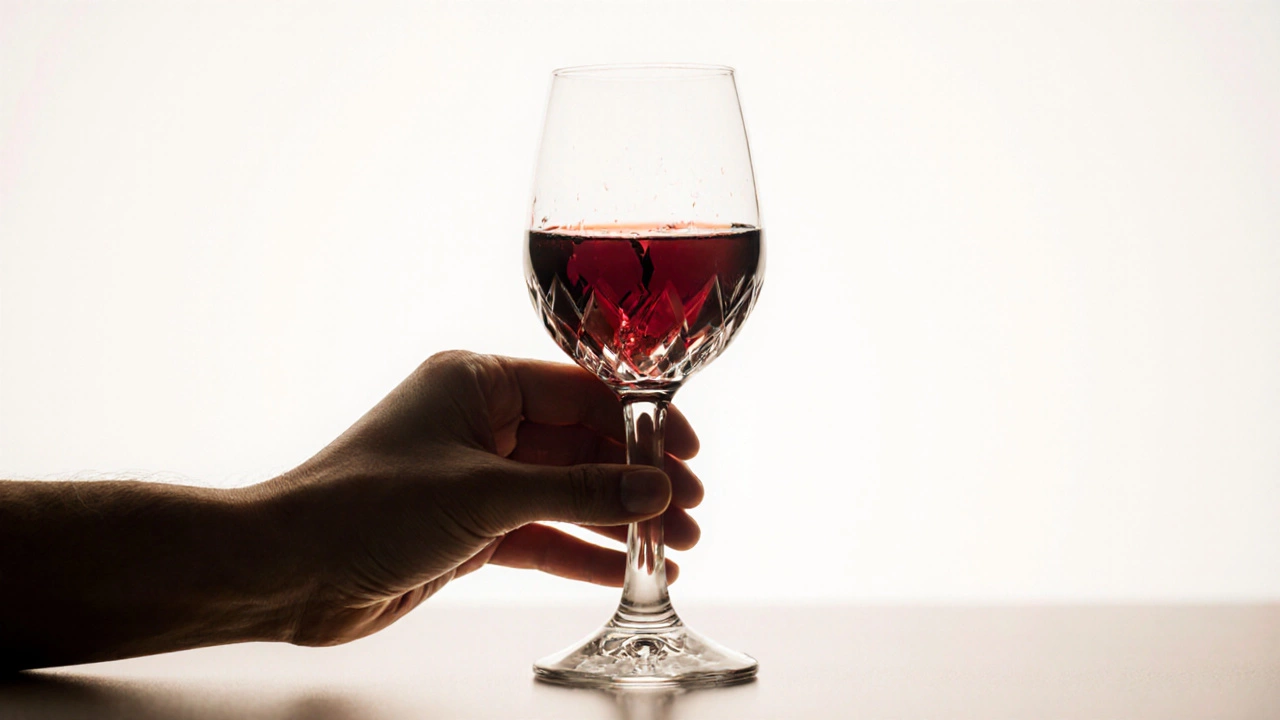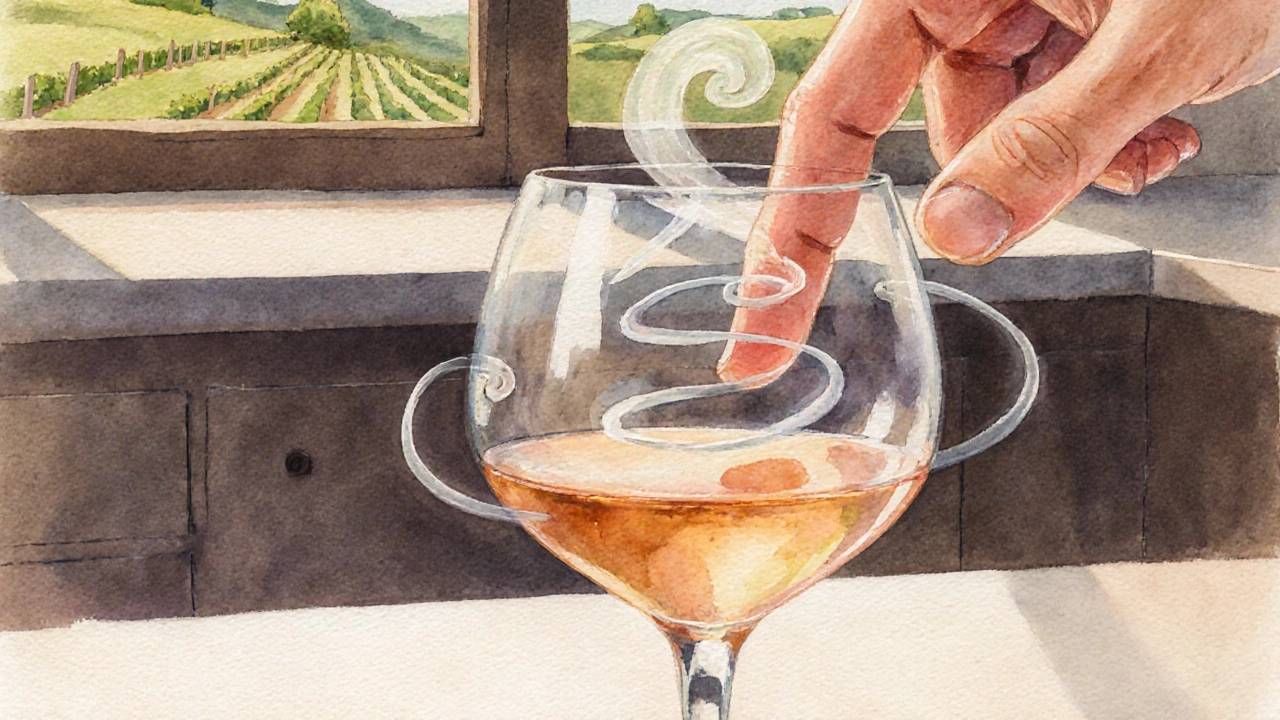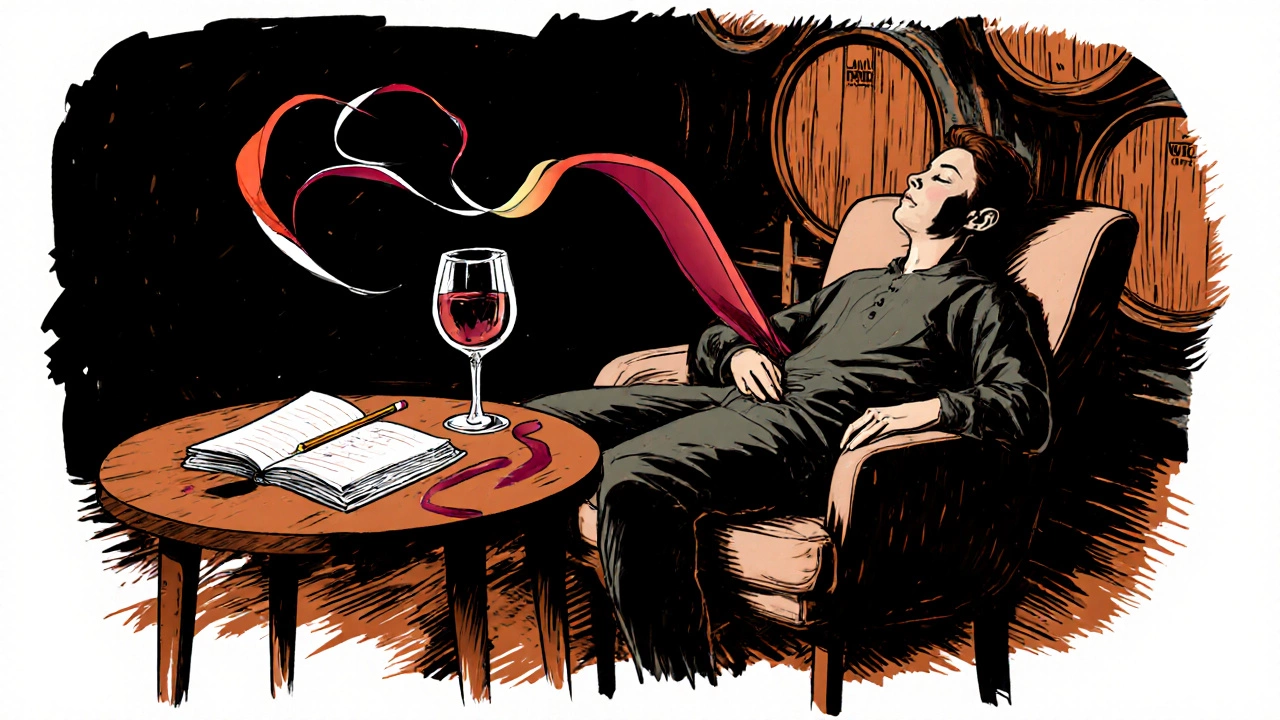Master the 5 S's of Wine Tasting: A Complete Guide
 Oct, 23 2025
Oct, 23 2025
When you sit down with a glass, wine tasting is a sensory experience that lets you evaluate a wine through five distinct steps, often called the 5 S’s. Knowing what to look for at each stage turns a casual sip into a memorable discovery, whether you’re at a vineyard in Bordeaux or your kitchen in Sydney. Below you’ll find a step‑by‑step walk‑through, practical tips, and common pitfalls to avoid, so you can confidently apply the 5 S’s the next time you uncork a bottle.
Sight - Evaluating the Wine’s Appearance
The first S, Sight, is all about the visual clues a wine gives you. Hold the glass at a 45‑degree angle against a white background and note the color, opacity, and any rim variations. A pale straw hue often signals a young white, while a deep garnet suggests age or oxidation. Clarity matters too - a hazy surface can indicate a fault or intentional unfiltered style. The “teeth” or legs that form as the wine drips back down the glass give a rough idea of alcohol level and body; slower, thick legs usually mean higher alcohol or residual sugar.
Swirl - Aerating the Wine
Next comes Swirl. A gentle circular motion releases volatile compounds that were trapped in the liquid. The goal isn’t to splash the table but to create a thin film that maximizes surface area. For delicate whites, a short 5‑second swirl is enough; robust reds benefit from a longer 10‑15‑second spin. Swirling also helps you see how the wine’s legs behave in motion, reaffirming the body and alcohol clues you gathered during Sight.
Smell - Assessing the Aroma
The third S, Smell, is where the real story unfolds. Bring the glass to your nose, inhale gently, and let the aromas settle. Primary aromas come from the grape itself - think citrus, green apple, or red berries. Secondary aromas are a result of fermentation, such as yeasty bread or buttery notes in Chardonnay. Tertiary aromas develop during aging, bringing out leather, tobacco, or earth. An aroma wheel can help you label what you detect, but trust your own memory of common scents - it’s quicker than any chart.

Sip - Tasting the Wine
Now you reach the fourth S: Sip. Take a modest mouthful, let it coat your palate, and notice the three classic taste pillars: sweetness, acidity, and bitterness (often linked to tannins). Ask yourself: Is the wine balanced, or does one element dominate? Pay attention to texture - does it feel silky, rough, or oily? The temperature at which you taste matters: reds around 60‑65°F (15‑18°C) reveal structure, while whites served slightly cooler (45‑50°F / 7‑10°C) enhance freshness.
Savor - Appreciating Finish and Balance
The final S, Savor, asks you to linger after the swallow. A long, evolving finish signals quality and complexity. Notice whether the flavors evolve - a citrus finish might turn into minerality, or a red fruit note may shift toward spice. Consider the overall harmony: do the visual, aromatic, and gustatory impressions line up, or is something out of sync? A well‑savored wine will leave you with a pleasant after‑taste that invites another sip.
Cheat Sheet: Putting the 5 S's into Practice
- Sight: Check color, clarity, and legs.
- Swirl: Aerate - 5‑15 seconds depending on style.
- Smell: Identify primary, secondary, tertiary aromas.
- Sip: Taste for sweetness, acidity, tannins, and texture.
- Savor: Observe finish length and flavor evolution.
Follow this list for every new bottle and you’ll start spotting patterns that seasoned tasters rely on.

Common Mistakes and Pro Tips
- Rushing the swirl - A half‑second spin won’t release enough aromatics. Give the wine time.
- Sniffing too hard - Over‑inhalation can overwhelm your olfactory receptors. Take gentle, repeated sniffs.
- Ignoring temperature - Too warm and a red will taste flabby; too cold and a white will mute aromas.
- Using the wrong glass - A wide‑bowl glass enhances reds; a narrower flute preserves white’s crispness.
- Skipping the finish - The aftertaste tells you the wine’s structure and aging potential.
Pro tip: Write down your observations in a small notebook or a tasting app. Over time you’ll build a personal reference that speeds up the whole process.
How Glassware and Temperature Influence the 5 S's
Glass shape affects how aromas travel to your nose. A tulip‑shaped glass channels volatile compounds, making the Smell step richer. For sparkling wines, a flute keeps bubbles alive, while a wide‑rimmed glass encourages the formation of aromas for still wines. Temperature controls the volatility of compounds: warmer wines release more aromatics, but can also make alcohol feel hot and mask subtle notes. A simple rule of thumb is to chill reds about 15 minutes before serving and let whites sit out for 5 minutes after removal from the fridge.
| S | What to Do | Key Goal | Pro Tip |
|---|---|---|---|
| Sight | Look at color, clarity, legs | Assess age and alcohol | Use a white background |
| Swirl | Spin the glass gently | Release aromatics | 5 sec for whites, 10‑15 sec for reds |
| Smell | Inhale, identify aromas | Detect fruit, fermentation, aging notes | Use an aroma wheel as a guide |
| Sip | Taste, note sweetness, acidity, tannins | Judge balance and texture | Let wine coat the whole palate |
| Savor | Observe finish and evolution | Measure quality and complexity | Note how long flavors linger |
Frequently Asked Questions
Do I need special glasses for the 5 S's?
A tulip‑shaped glass works well for most wines because it captures aromas while allowing a comfortable sip. Sparkling wines benefit from a flute, and very aromatic whites like Riesling shine in a slightly wider bowl.
How long should I let a red wine breathe?
Generally 20‑30 minutes in a decanter or a wide glass is enough for young reds. More tannic wines, such as Cabernet Sauvignon, may improve after an hour.
Can I skip any of the 5 S's if I’m in a hurry?
Skipping steps reduces the depth of your experience. If pressed for time, at least do Sight and Smell - they give you the bulk of the information without the linger of Savor.
What’s the difference between aroma and bouquet?
“Aroma” refers to the primary fruit‑derived scents, while “bouquet” describes secondary and tertiary notes that develop during fermentation and aging.
Is there a right order for the 5 S's?
Yes - the sequence (Sight → Swirl → Smell → Sip → Savor) mirrors how our senses naturally process a wine, ensuring each step builds on the last.